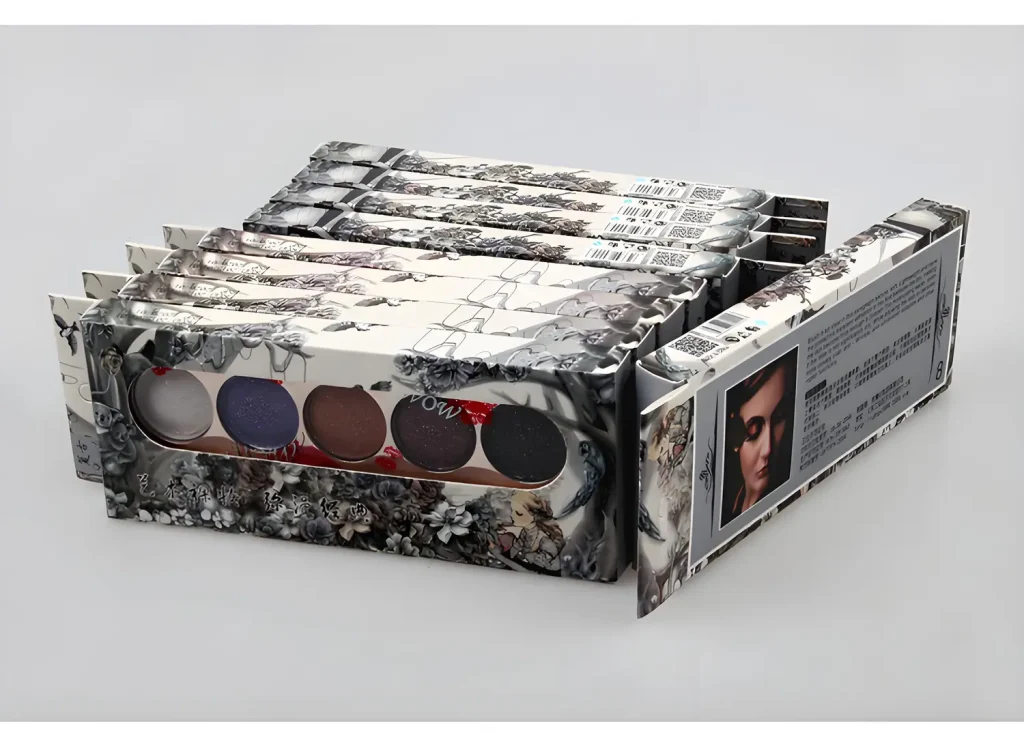
Developing cohesive visual identity for your eyeshadow palette
Developing a cohesive visual identity for your eyeshadow palette involves creating a consistent and recognizable look across all brand materials. This includes your logo, color scheme, and typography. Here’s a step-by-step guide to help you create a cohesive visual identity:
1. Define Your Brand Personality and Values
- Brand Personality: Determine if your brand is bold, elegant, playful, natural, sophisticated, etc.
- Core Values: Identify values such as inclusivity, sustainability, quality, and creativity.
2. Create a Mood Board
- Inspiration: Gather images, colors, textures, and fonts that inspire you and align with your brand’s personality.
- Themes: Focus on themes that resonate with your target audience and reflect your brand’s story.
3. Design Your Logo
- Simplicity: Keep the design simple and versatile. It should look good in various sizes and formats.
- Symbolism: Use symbols, shapes, or icons that represent your brand’s essence.
- Typography: Choose a font that matches your brand personality. For example, a modern sans-serif for a contemporary look or a classic serif for a sophisticated feel.
- Versatility: Ensure your logo works in color and black-and-white formats.
4. Develop a Color Scheme
- Primary Colors: Select 1-2 main colors that represent your brand. These will be used most frequently.
- Secondary Colors: Choose 2-3 complementary colors to support the primary colors. These can be used for accents and variety.
- Neutral Colors: Include neutral colors like white, black, gray, or beige for backgrounds and text.
- Seasonal Variations: Consider how you might adapt your color scheme for seasonal collections while maintaining overall brand consistency.
5. Choose Typography
- Primary Font: Select a main font for headings and prominent text. This should reflect your brand’s personality.
- Secondary Font: Choose a secondary font for body text that complements the primary font.
- Readability: Ensure both fonts are legible and look good in various sizes and formats.
- Consistency: Use the same fonts across all brand materials, including packaging, website, and marketing materials.
6. Design Packaging and Marketing Materials
- Packaging: Create a packaging design that incorporates your logo, color scheme, and typography. Ensure it reflects your brand’s personality and values.
- Marketing Materials: Design social media graphics, ads, brochures, and other materials using your visual identity elements.
7. Create a Brand Style Guide
- Logo Usage: Provide guidelines on how to use the logo in different contexts, including size, spacing, and color variations.
- Color Palette: Define the exact color codes (HEX, RGB, CMYK) for your primary, secondary, and neutral colors.
- Typography: Specify the fonts and styles for headings, subheadings, and body text.
- Imagery: Include examples of the types of images that align with your brand, such as lifestyle photos, product shots, and illustrations.
- Voice and Tone: Outline the voice and tone for written content to ensure consistency in messaging.
By developing a cohesive visual identity, you create a strong, recognizable brand that resonates with your target audience and sets your eyeshadow palette apart in a competitive market. You can learn more here

